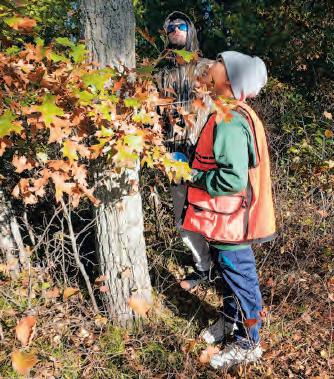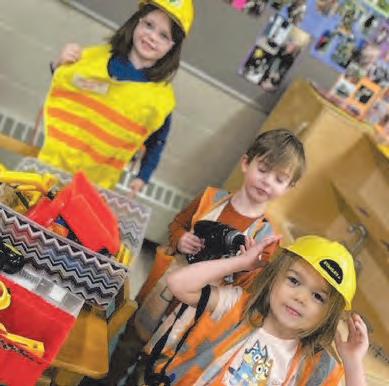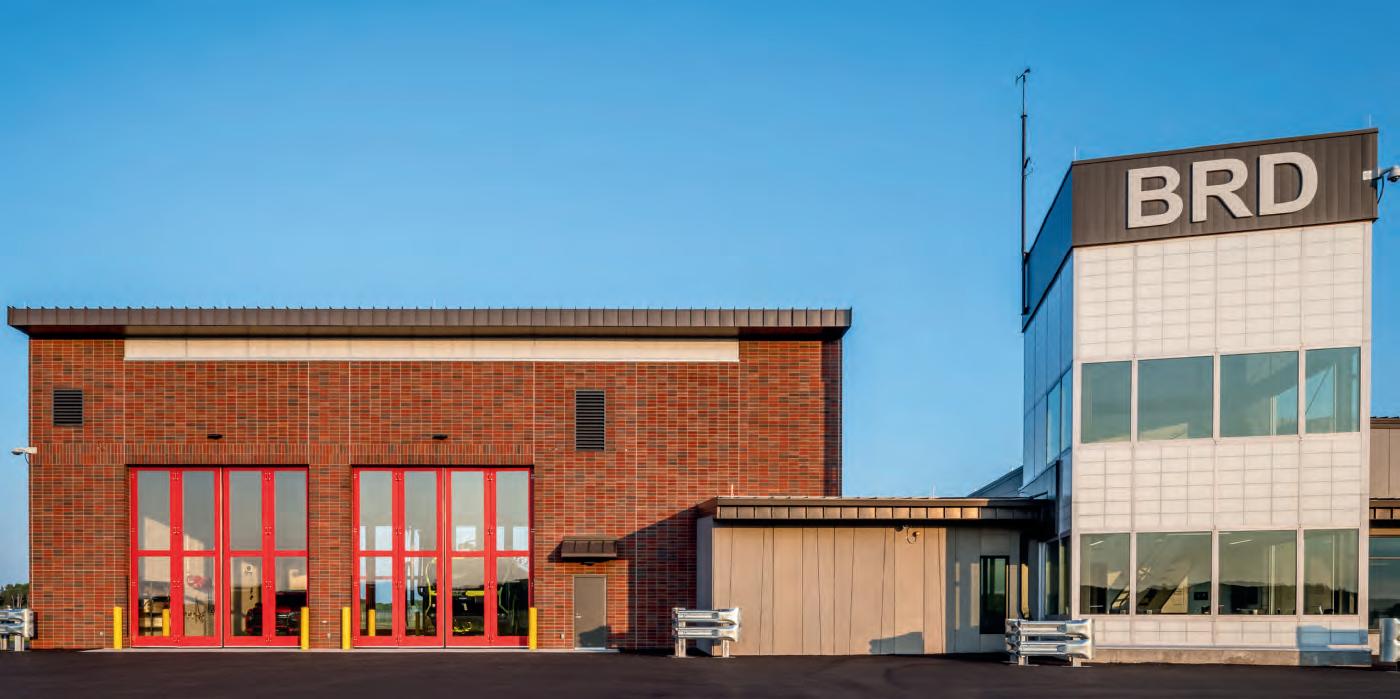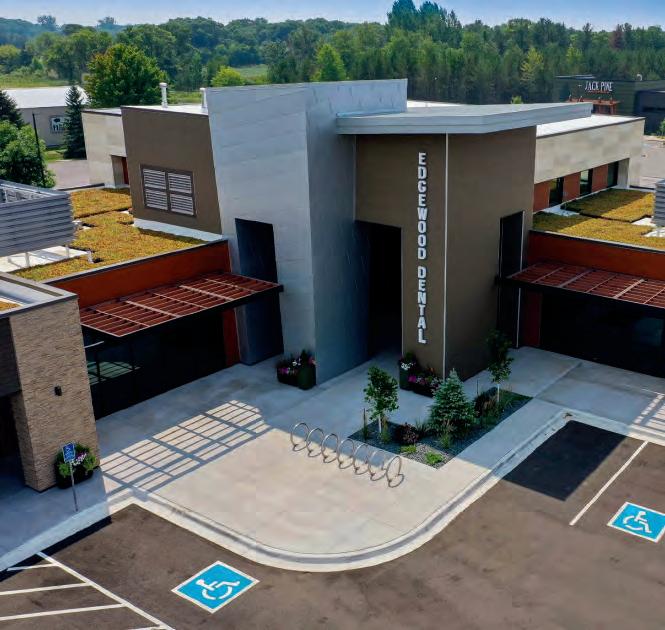
4 minute read
Growing trees while growing students
BY REBECCA FLANSBURG
PHOTOS BY JOEY HALVORSON
Iam the Lorax who speaks for the trees.”
There may not be a fuzzy orange guy inspired by a Dr. Seuss book to speak up for the trees in the Brainerd lakes area, but there is an army of passionate people who are determined not to let the younger generation forget how vital our woodlands are.
During the Forestview Middle School construction in 2003, a committee was formed to reserve the adjoining 60 acres of woodland as a learning tool for current and future ISD181 students. One of the committee’s goals was to apply for a Minnesota School Forest designation from the Department of Natural Resources. A school forest is an outdoor classroom where teachers and students utilize nature to teach core subjects such as math, science, reading, writing, geography, physical education, the arts and much more. The committee’s application was approved in 2005, and the work to create something special began. Area leaders, organizations, businesses, teachers and DNR employees moved literal mountains to develop and maintain what is now known as the Dean Makey School Forest.
In 2011, Robin Knutson was approached by kindergarten teachers who wanted to do something special with the seedling trees their students were given during the fall semester. Knutson then worked with retired DNR Forester and School Forest Committee Member



Dean Makey to create a new project. Kindergarten class trees introduced students to conifer trees through a classroom presentation. Kids could touch a tree seedling while learning the importance of roots, leaves and trunks. The seedlings from each kindergarten class were planted in a designated “grove” within the school forest. Now a Secondary Curriculum Specialist, Knutson is still very involved in the school forest project.
“Each class liked the idea of naming their trees, and some of the names they came up with are pretty creative,” Makey shared. “We’ve had lots of ‘Pokey,’ ‘Piney,’ and ‘’Spike,’ but we’ve also seen names like ‘Rootie,’ ‘Sir Spikes A Lot,’ and ‘Elsa Greenleaf.” This project has been going on for so long that we filled up Kindergarten Grove No. 1 and are now working on planting in Grove No. 2.”
To date, nearly 8,000 tree seedlings have been planted by students in other reforestation projects, covering approximately 13 acres of the forest. Some of the original planted seedlings are 20 feet tall.






These fresh plantings are a milestone for each graduating class and a learning experience for other grades. Makey, along with DNR and County foresters, Crow Wing Soil and Conservation District experts and Natural Resource students from Central Lakes College use the school forest to teach fifth graders the importance of good forest stewardship.
“We teach them about the history of the land and how the school forest was created,” Makey noted. “We teach the importance of reforestation of cut areas and why clearing the brush around the trees reduces competition with other plants for moisture and sunlight. Tree identification is another learning tool we use so youngsters understand that not every conifer tree is a ‘pine.’”
Former student and 2021 graduate Jacob F. recalls when his fifth grade class participated in Forestry Days. “I remember learning about the tools used for forestry and how foresters manage trees,” he shared. “I also remember seeing my kindergarten class tree, and it was cool to see how much it had grown.” Now a resident of Florida, Jacob added he plans to return to the school forest when he can to see how much his class’s tree has grown.
Teacher Chris Hanson also actively participates in the school forest and its offerings. As a seventh grade science teacher, a cross-country coach and one of the forest’s coordinators, he shares how he uses the forest as an outdoor classroom.
“I’ve been fortunate to be able to use the Dean Makey Forest as a training site for cross-country running, track, and Nordic skiing kids and for promoting outdoor activities of all sorts,” he shared. “I am passionate about getting kids and adults active and outdoors, so this patch of woods and wetlands is an incredible resource literally steps away from the school doors.”
Makey added the students help with the school forest maintenance mainly in the spring and fall. Spring is a time for planting new tree seedlings and removing any brush that may inhibit growth. In the fall, students learn how to protect the fragile seedlings from hungry deer during the winter. Makey and other team members show students how to protect those vital parts with “bud capping,” a tactic where protective paper is wrapped and stapled around the tips of each young tree. A more labor-intensive method involves a mesh tube that encircles the seedling until it can grow to a height that deer and other hungry woodland critters can’t reach. These protective barriers are removed during the summer so the trees can grow freely.

During the spring, summer and fall, residents enjoy using the forest trails for exercising, dog walking and a quiet reprieve from busy lives. During the winter, the Brainerd Nordic Ski Club grooms the main, wider trails for skiing only. One option for foot traffic during winter is the new singletrack trail for hiking, mountain biking and snowshoeing enthusiasts, which offers a more intimate forest experience. To accommodate the growing popularity of the forest’s trails, an extended parking area was added, and thanks to local Eagle Scouts, a kiosk and picnic table at the trail’s entrance were added as well.
“One of our many goals with the school forest is to teach kids how to be a good steward of the forest,” Makey noted. “Often, nature is not kind to our trees. That’s when we must harvest fallen, dead, or diseased trees, provide water to seedlings and young trees during drought, clear overgrown brush, and protect them from wildlife damage. All forests, whether the Forestview School Forest or others, should be viewed as places to learn, enjoy and respect. If you like to breathe air, then we need our trees. The oxygen they produce is critical for the well-being of all living creatures. And I think that’s something we all take for granted.”
The Dean Makey School Forest page on the ISD 181 website contains information on the project’s history, updates, trail maps, and more. Learn more by visiting https://sites.google. com/isd181.org/deanmakeyschoolforest/home.






Hy-TecConstructionisaproudsupporterof theBrainerdPublicSchools&ourCommunity GoWarriors!
Hy-Tec Construction is a proud supporter of the Brainerd Public Schools & our Community Go Warriors!











